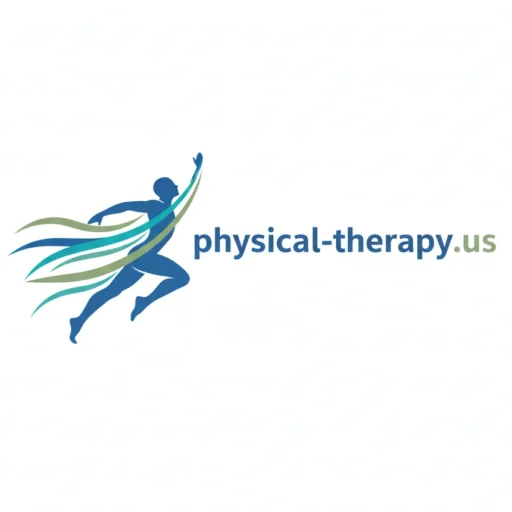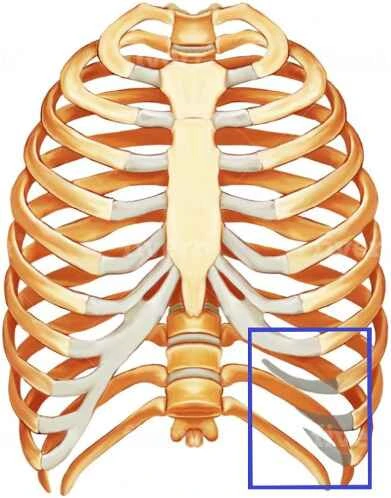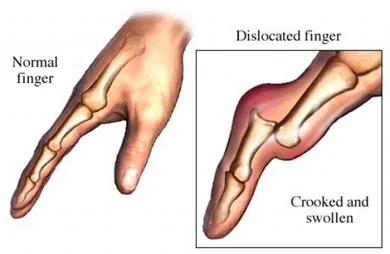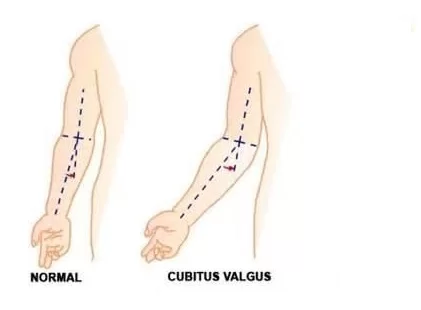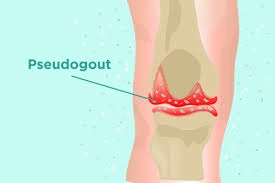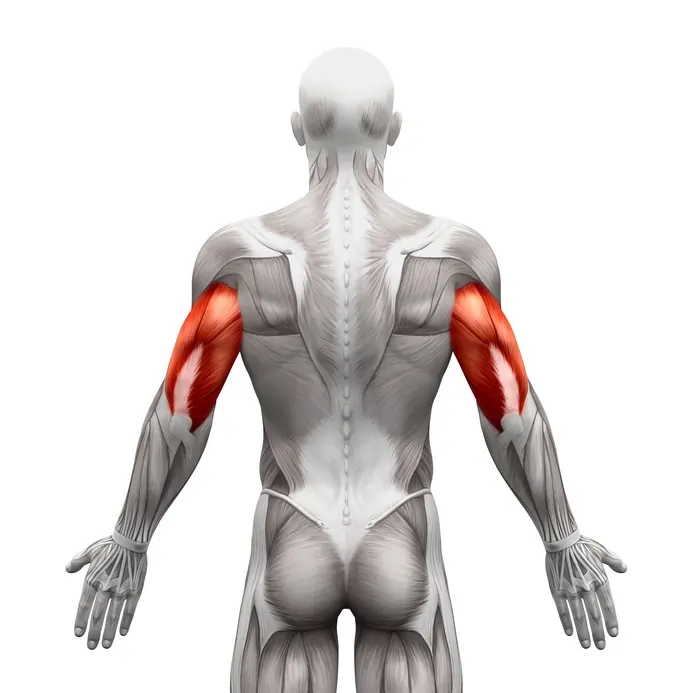14 Best Exercises For Plantar Fascia Tear
Introduction:
Plantar fascia tears, painful injuries associated with partial or chronic plantar fasciitis, can seriously affect mobility and quality of life. Exercises for Plantar Fascia Tears can be quite beneficial for rehabilitation if done properly and cautiously, even though relaxation and suitable footwear are essential for healing.
An injury, trauma, continuous overuse, or poor biomechanics can all result in a partial or complete tear in this tissue.
Exercises that stabilize your foot, hip, and thigh can help you relieve the pain associated with plantar fasciitis by strengthening your muscles to better maintain your foot’s arch.
See a physical therapist to determine the exercises you should perform before starting an exercise program. The exercises recommended for someone else with plantar fasciitis might not be the same as those for you. It could get worse if you do the improper exercises.
Causes:
Chronic Overuse
- Continuing stress on the plantar fascia without enough time for recuperation.
- Dancers, runners, and others who stand or walk for extended amounts of time.
Unexpected Rise in Activity Level
- Raises training intensity or begins a new running program without properly building up.
Incorrect Stretching or Warm-Up
- The plantar fascia may become less flexible and more prone to ripping if you don’t prepare before intense exercise.
Past History of Plantar Fasciitis
- People with a history of plantar fasciitis are more likely to tear because their fascia is weaker and more irritated over time.
Degeneration Associated with Age
- Connective tissues, such as the plantar fascia, become less elastic and stronger with age, increasing the likelihood of damage.
Overweight
- Being obese or gaining weight quickly puts more mechanical strain on the fascia, particularly while moving or exercising.
Flat or High-Arched Feet (Problems with Foot Structure)
- The distribution of forces across the fascia is changed by foot deformities.
- Overstretching causes flat feet (pes planus), which increases the strain.
Wearing footwear that lacks enough arch support or comfort
- Particularly when engaging in high-impact activities, is the cause of improper footwear.
Tight Achilles Tendon or Calf Muscles
- Tight muscles that restrict ankle dorsiflexion might put more strain on the plantar fascia, particularly while walking or performing sports.
Unexpected Trauma or Forceful Incident
- Unusual foot loads can include awkward landings or jumping.
- Highly pushing off or jogging.
Signs and symptoms:
Unexpected, Sharp Pain
- An acute, stabbing pain in the heel or arch.
- Awkward stepping, jogging, and sports are common causes.
- When injured, you could experience a “pop” or a tearing feeling.
Pain When Standing or Walking
- Weight-bearing exercises increase pain.
- Walking, standing, or pushing off the toes is uncomfortable or difficult.
- Walking with a limp or avoiding heel pressure are possible options.
Sensitivity to Touch
- The bottom of the foot is extremely sensitive, particularly in the area close to the arch or heel.
- Pain becomes more severe by pressing the region.
Stiffness of the Foot
- Particularly apparent in the morning or following extended periods of sitting.
- Unlike plantar fasciitis, stiffness typically doesn’t go significantly better with activity.
Problems with Typical Tasks
- Challenges when walking, jogging, climbing stairs, or standing for long periods.
- Pain may be so bad that it interferes with day-to-day activities.
Bruising as well as swelling
- The arch or heel will often show signs of swelling in a few hours.
- Foot bruises, particularly when there is a partial or whole rupture.
Exercise’s advantages:
When performed correctly and under supervision, exercises for a plantar fascia injury can greatly promote healing and long-term foot health. The benefits of performing the correct exercises during recovery are given below.
Quickens the Healing Process
- Blood flow to the surrounding tissues and fascia is improved by modest, progressive exercises, which reduce inflammation and promote tissue healing.
Increases flexibility
- Range of motion is enhanced by stretching the foot arch, Achilles tendon, and calves.
- Lessen morning stiffness and avoid more injuries.
Increases Ankle and Foot Muscle Strength
- Strength training helps in force redistribution via the foot and arch stabilization.
- Keeps the plantar fascia from becoming overloaded in the future
Improve Stability and Balance
- The intrinsic foot muscles and core stabilizers are used in many rehabilitation activities.
- Better balance reduces the risk of incidents, slips, and compensatory injuries.
Increases Mobility and Confidence
- You can resume your regular activities more easily when your strength and pain levels improve.
- Assist people in getting back into sports or exercising in a safer and faster manner.
Correct Foot Mechanics Are Restored
- Exercises retrain your foot’s weight-bearing and movement.
- Helps to alleviate strain when walking or running and corrects irregularities in gait.
Prevents Re-Injury
- Tissues that are more durable and pliable are less prone to tears again.
- For athletes or others with biomechanical foot problems (like flat feet), this is particularly important.
Lessens Pain
- Tension in the calf muscles, Achilles tendon, and fascia is released by stretching and strengthening activities.
- Gradually lessen pain by assisting in the reduction of the pulling tension on the plantar fascia.
Exercises For Plantar Fascia Tear:
The following exercises are beneficial to many people. Make any necessary adjustments to the position to make it more comfortable.
Ankle circle
- Get into a chair and raise the foot that is affected.
- Keep your leg straight and only rotate your ankle.
- Turn your foot clockwise, making slow, cautious circles.
- When 10 to 15 circles are finished, turn anticlockwise.
- Then return to your neutral position.
- Then relax.
- Repeat these exercises 5 to 10 times.
 ankle-circle
ankle-circle
Standing calf stretch
- Position yourself far from a wall.
- Hold your hands straight against the wall.
- Maintain a straight knee and a flat heel on the ground when stretching one leg.
- Bend your front knee while keeping your hips forward.
- Until your calf feels stretched, slowly bend your elbows.
- Hold this position for a few seconds.
- Then return to your neutral position.
- Then relax.
- Repeat these exercises 5 to 10 times.
 Standing Calf Stretch
Standing Calf Stretch
Foam rolling
- Start with the seating position on the chair.
- Then step your foot onto the foam roller.
- Using a small amount of pressure, gently move the object from your heel to your toes, being mindful of any tight spots.
- Roll under your foot with the foam roller, starting at the heel and moving toward the toes.
- Press lightly to moderately while rolling for one to two minutes.
- Then return to your neutral position.
- Then relax.
- Repeat these exercises 5 to 10 times.
 Foam Rolling
Foam Rolling
Heel raise
- You should begin by standing on the floor.
- Put your hand on the chair’s backrest for stability as well as support.
- Inhale deeply and lift your heels off the floor.
- Hold this position for a few seconds.
- Take a deep breath and place your heels on the ground.
- Then return to your neutral position.
- Then relax.
- Repeat these exercises 5 to 10 times.
 heel-raise
heel-raise
Marble pick up
- Start with the seating position on the chair.
- In front of you, place some marbles, and have a bowl nearby.
- Using your toes, grab each marble individually.
- Then return to your neutral position.
- Then relax.
- Repeat these exercises 5 to 10 times.
 marble pickup
marble pickup
Single-leg heel raise
- If you need assistance when standing on one leg, use a chair or wall.
- Push your heel off the ground gradually to move up onto the heel of your foot.
- Hold this position for a few seconds.
- Slowly drop your heel.
- Then return to your neutral position.
- Then relax.
- Repeat these exercises 5 to 10 times.
 Single-foot heel raise
Single-foot heel raise
Toe-to-wall-stretch
- Toes up and against the wall as you stand facing the wall.
- The stretch is deeper the higher you place your toes.
- Lean forward while maintaining a heel-to-floor position.
- You should have the second leg behind while keeping your toes forward and your heel down.
- Hold this position for a few seconds.
- Then return to your neutral position.
- Then relax.
- Repeat these exercises 5 to 10 times.
 toe-to-wall-stretch
toe-to-wall-stretch
Seated Heel Raises
- Place your feet flat on the floor and sit down at a sturdy table.
- Put your hands on your thighs to maintain your balance.
- Afterward, concentrate on your calf muscles.
- Raise your heels as high as you can while pushing onto the heel of your foot.
- Hold this position for a few seconds.
- Lower your heels off the floor.
- Then return to your neutral position.
- Then relax.
- Repeat these exercises 5 to 10 times.
 Seated Foot & Heel Raise
Seated Foot & Heel Raise
Seated Plantar Fascia Stretch
- Choose a chair that is comfortable for you and place your feet flat on the floor.
- The shoulders should remain relaxed and the back straight.
- One foot should be placed over the opposing knee.
- Reaching the bottom of your foot in this manner will be possible.
- Stretch your foot by holding your toes with the hand on the same side.
- You can lengthen the bottom of your foot by carefully pulling your toes into your shin.
- When you move your toes closer to your shin, you should feel a stretch on the bottom of your foot, particularly in the arch.
- It may also be felt along your heel.
- Hold this position for a few seconds.
- Then return to your neutral position.
- Then relax.
- Repeat these exercises 5 to 10 times.
 seated-plantar-fascia-stretch
seated-plantar-fascia-stretch
Towel curl
- Take a seat on the chair to begin.
- You should lay a tiny towel on the ground in front of yourself.
- On your toes, curl up and pull the towel towards you.
- Continue until the towel is wrapped around your entire foot.
- Make sure to flatten the towel once more.
- Then return to your neutral position.
- Then relax.
- Repeat these exercises 5 to 10 times.
 Towel-curl
Towel-curl
Golf ball roll
- Start seating position on the chair.
- On the floor next to the feet, place a golf ball.
- Place one foot on the ball and move it around while applying as much pressure as feels comfortable.
- After one to two minutes, switch to the other foot and repeat.
- Then return to your neutral position.
- Then relax.
- Repeat these exercises 5 to 10 times.
 Golf-ball-roll-exercise
Golf-ball-roll-exercise
Calf raise
- Allow your heels to fall as far as you can while keeping the soles of your feet on the stairs edge.
- This is the movement’s initial position.
- Elevate your heels as high as you can, slowly.
- After pausing, carefully return to the starting posture by lowering your heels.
- Don’t stop at the bottom; instead, begin the next repetition right away.
- Then return to your neutral position.
- Then relax.
- Repeat these exercises 5 to 10 times.
 Bodyweight-Standing-Calf-Raise
Bodyweight-Standing-Calf-Raise
Towel stretch
- To begin, take a seat on the floor.
- Then extend your legs.
- Wrap the towel around one foot while holding onto both edges with your hands.
- Start by slowly pulling your toes into your shin to start stretching your calf.
- Hold this position for a few seconds.
- Then return to your neutral position.
- Then relax.
- Repeat these exercises 5 to 10 times.
 Towel stretch
Towel stretch
Ice-bottle-massage-exercise
- Continue to move your foot across the water bottle.
- Give the plantar fascia a little pressure.
- Lift your heel as you roll the bottle to the ball of your foot, and stretch your inner sole thoroughly.
- Point your toe down to extend the top of your foot as you roll the bottle back to your heel.
- You can put a little pressure on the points that hurt while you’re massaging them and hold it there.
- Then return to your neutral position.
- Then relax.
- Repeat these exercises 5 to 10 times.
 Ice-bottle-massage-exercise
Ice-bottle-massage-exercise
During exercise, what safety precautions should be taken?
First, get a professional consultation.
Before starting any fitness regimen:
- To find out the kind and extent of the tear, speak with a doctor.
- Observe the recuperation stage:
- Before performing rehabilitation exercises, some tears can require total rest.
- A physical therapist can assist you in completing a customized rehabilitation regimen.
Get Well Warmed Up
- Even for workouts used for rehabilitation, warming up is crucial.
- Warming up lowers the chance of re-tear and promotes tissue flexibility.
Put on supportive footwear.
- Even at home, always wear shoes with arch support and plenty of cushioning.
- Especially on rough flooring, avoid going barefoot.
Avoid Early Weight-Bearing Activities
If the tear hurts or is recent:
- Do not engage in weight-bearing or high-impact activities like:
- Jogging
- Running
- Taking long walks
Make Progress Slowly
- Resuming regular walking or sporting activity should not be hurried.
- Start with quick sessions (five to ten minutes), one or two times a day.
- Increase gradually;
- The number of times
- Resistance
Keep an eye out for warning signs.
- Stop working out and consult a doctor if you observe:
- An increase in arch or heel pain
- Swelling
- Getting bruised
- Feeling numb or tingling
- Unable to support weight after working out
Safe Stretching
- Plantar fascia tightness can be released with specific stretches.
- Avoid jumping while stretching, as this may result in small tears.
Post-Exercise Management Following your workout:
- To reduce inflammatory processes, put ice on the heel or arch for 10 to 20 minutes.
- If your foot is swollen, keep it up high.
- To cool down, perform a quick, mild stretch of the plantar fascia and calf.
When did you stop exercising?
To prevent making your injury worse, it’s important to recognize the warning indications that your body is not handling exercise effectively.
These are a few things to consider:
Bruising or Swelling Appearance
- This could worsen the rip by indicating tissue injury or inflammation.
You Feel Acute or Sudden Pain
- This can be a sign of the plantar fascia being overworked or torn again.
- Stop right away, take a break, and apply ice.
- If the pain persists, consult a physician.
After exercising, the pain lasts for hours.
- Your foot is not able to handle the current load or type of exercise if you have persistent pain after an activity.
- In the following session, lower the level or intensity of the workout.
- Rest completely till the level of pain returns to normal.
Unable to Support Weight
- This may indicate serious inflammation or that the tear has gotten worse.
- As time passes, pain gets worse rather than better.
- Shows a poor reaction to the current treatment or a potential misconception.
Feelings of Tingling or Numbness
- Poor circulation or nerve involvement could be indicated by this, both of which need to be corrected.
You’re Using Poor Form Because of Weakness or Pain
- Other body parts are strained when adjusting, which might result in more injuries.
Due to your chronic pain, you’re exhausted or lacking motivation.
- Burnout caused by pain might make it harder to stay committed to treatment and raise your chances of making mistakes.
Which exercises should you avoid if you have a Plantar Fascia Tear?
Particularly in the early and mid stages of recovery, you should avoid specific exercises if you have a plantar fascia tear. These exercises could worsen the rupture, postpone its recovery, or result in more damage.
Jogging or Running
- The plantar fascia is strained by high-impact and repetitive heel strikes.
Aerobic Steps or Stair Running
- Excessive strain on the plantar fascia results from pushing off with each step on the heel or base of the foot.
- Even slow stair climbing can cause pain if done incorrectly or repeatedly.
Plyometric Jumping Exercises
- These create a sudden and recurrent force on the plantar fascia during the push-off and landing phases.
Sports with a High Impact
- Demand rapid stops, forceful foot motions, and direction changes that put undue strain on the plantar fascia.
Long walks or hikes (particularly on hard surfaces)
- Repetitive strain is a result of long-distance walking, particularly on paved or elevation-changing trails.
Leg Exercises Using a Lot of Weight
- When lifting, excessive pressure is transferred through the foot arch, particularly in cases of poor balance or form breaks.
Summary:
If done properly, exercise after a plantar fascia tear can hasten recovery, lower the chance of further injuries, and restore complete foot function. Your physical therapist and you ought to work together to develop a personalized plan.
Numerous things, such as excessive use, improper footwear, and specific medical disorders, can result in plantar fasciitis. Thankfully, there are a number of activities that may help in healing and reducing plantar fasciitis symptoms. You might be able to regain your movement confidence without any issues if you concentrate on mobility, strength, and low-impact stretching activities.
To lessen the likelihood that the pain will return, it is advisable to continue performing these exercises even after it is gone. Warm up and stretch your calf muscles before beginning the activity, and wear supportive footwear afterward.
FAQ:
Which workouts are ideal for the initial stages of recovery?
Begin with non-weight-bearing exercises and mild stretching:
Towel stretches
Seated foot flexes
When may I begin strengthening or weight-bearing activities?
Depending on the extent of the tear and the healing of symptoms, usually after two to three weeks. Begin by: Heel raises, Standing calf stretches, Arch strengthening.
Always acquire your doctor’s or physical therapist’s approval before doing anything.
How frequently should I perform exercises for plantar fascia rehabilitation?
Stretching and strengthening should be done two to three times a day and three to five times a week, respectively. Keep to your physical therapist’s advice; while consistency is important, going overboard might cause healing to be delayed.
Before beginning the workouts, do I need to warm up?
Indeed. A little warm-up, such as a short walk or toe pointing/flexing, improves blood flow and gets the tissue ready for strengthening or stretching.
How can a plantar fascia tear be healed the quickest?
The majority of patients with plantar fasciitis recover in a few months using conservative measures such as applying ice to the affected area, stretching, and avoiding or reducing uncomfortable activities.
Is walking on a damaged plantar fascia harmful?
It hurts, though! When you first get out of bed, your walking pain is typically worse. As you walk a few steps, the pain normally gets better.
Are plantar tears self-healing?
Sometimes, especially if the rupture is minor, a plantar plate tear, an injury to the ligament structure in the heel of the foot beneath the toe joint,s heals on its own. Nonetheless, the restoration procedure typically involves a number of stages and time.
What occurs if plantar fasciitis is ignored?
Over time, the plantar fascia may develop small tears due to inflammation and strain. Your pain might start slowly, and if you don’t get help, these tears might get bigger and worse, which would make it more likely that the plantar fascia would burst and become disabled.
Is it possible to make plantar fascia stronger?
One of the best ways to relieve plantar fasciitis is to stretch and strengthen the region that is affected. In addition to strengthening the supporting muscles and preventing tears, relaxing the plantar fascia helps reduce inflammation and ligament stress.
Which dos and don’ts apply to plantar fasciitis?
Make sure you use the proper footwear, such as insoles and soft-soled shoes, to reduce weight and give your feet more relaxation. DO reduce back on your workouts for a while. Run shorter distances or stop running altogether. DO give your doctor a call if therapy doesn’t improve your problems.
References:
- Villines’ top plantar fasciitis stretches & exercises for 2024
- Health Advice | Six Plantar Fascia and Heel Pain Exercises for 2024
- Top plantar fasciitis exercises for 2024
- McMillen’s 2025 plantar fasciitis workouts
- Plantar fasciitis – Versus Arthritis
- The Top 6 Foot Pain-Relieving Plantar Fascia Exercises | Toronto Physiotherapists | Yorkville Sports Medicine Clinic – 2023 – SportsMed
- Smith lists the top six plantar fasciitis physical therapy exercises for 2024.
- “Plantar fasciitis stretches to relieve heel pain in 2023” Colbert.
